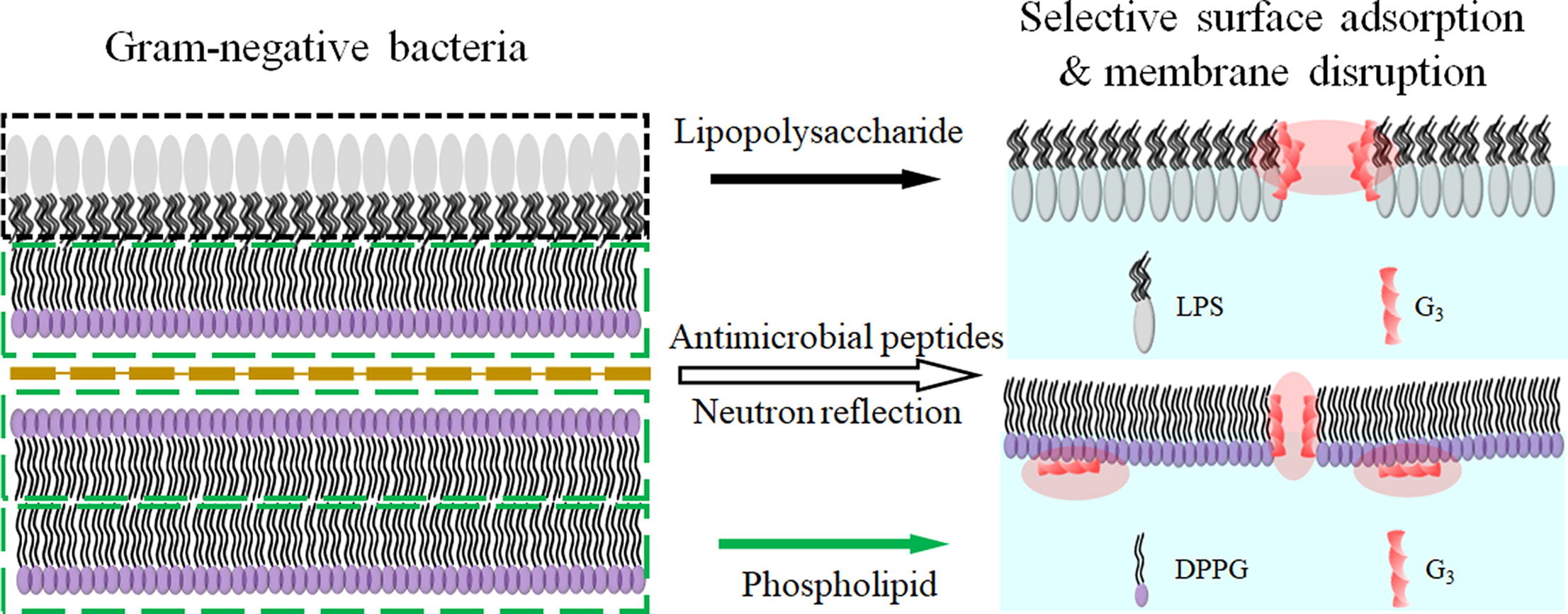Antimicrobial peptides (AMPs) are a promising tool in the fight against the ongoing global threat from bacteria that are resistant to antibiotics. It is widely accepted that AMPs kill bacteria by disrupting their membranes and this membrane-targeted way of killing the bacteria often leads to rapid killing, which means that microbes are less likely to become resistant to AMPs.
The research group from the University of Manchester, led by Professor Jian Lu, wanted to find out how the AMPs disrupt both the outer and inner membranes of Gram-negative bacteria, which are showing increasing resistance to available antibiotics.
To do this, they built a lipid monolayer, modelled on a bacterial membrane, whose composition they could control to replicate different types of bacterial membranes. They were then able to study these monolayers on the SURF reflectometer at ISIS and the FIGARO reflectometer at ILL to find out what happened to the layers in the presence of different AMPs, as shown in the diagram below.

In their study, published in the Journal of Colloid and Interface Science, they looked at the effects of three AMPs and found that all were more effective at disrupting the monolayers that resembled the composition of the outer membrane than those modelled on the inner membrane.
This shows that the disruption of the outer membrane is important in causing bacterial cell death, although many AMPs have been designed with inner membrane disruption in mind. As it is often the outer membrane that adapts to build resistance in bacteria, knowing that AMPs target the outer membrane offers an alternative perspective to the traditional approach.
Gaining a detailed insight into the interactions between AMPs and bacterial membranes will help the further design and development of small peptide drugs that are more potent and selective against Gram-negative bacteria.
“The neutron technique is about the only approach to gain this kind of detail across a bacterial membrane," explains Professor Lu. “It allows us to compare the antimicrobial peptides we have designed with current antibiotics. In the long run, it will help us understand why some of our current antibiotics become resistant."
Further information
The full paper can be found online at DOI: 10.1016/j.jcis.2023.01.051
